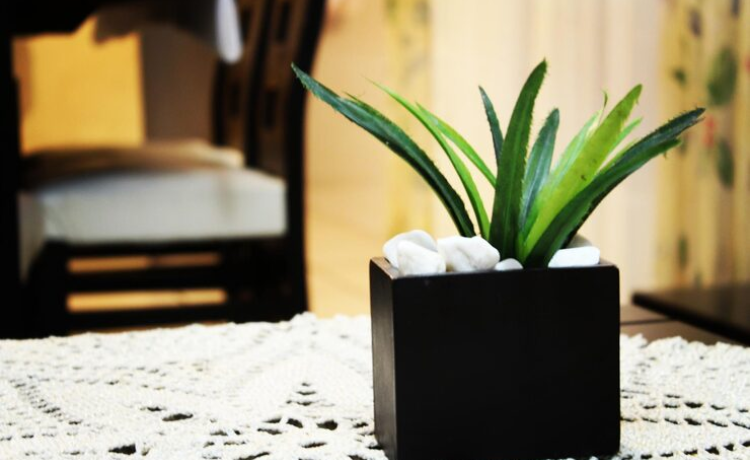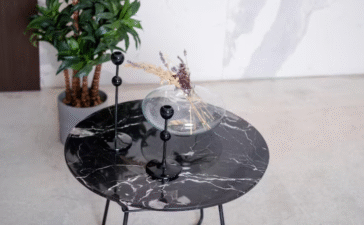Your bathroom is more than just a functional space; it’s a sanctuary. Adding a touch of green can transform it into a serene retreat, improving air quality and boosting your mood. With their unique combination of low light and high humidity, bathrooms create a perfect environment for specific types of plants to thrive. As horticulturists and design enthusiasts, we’ve seen how the right plant can breathe life into any room. This guide draws on expert knowledge to help you choose the best plants for bathroom and provides evidence-based tips to ensure they flourish. We’ll cover everything from the benefits of bathroom greenery to selecting the perfect plants for your specific conditions, whether you have a sun-drenched window or a small, dim space. By the end, you’ll have all the information you need to create your own botanical haven.
Why You Should Have best Plants for Bathroom
The benefits of adding plants to your bathroom extend far beyond simple aesthetics. They are hardworking additions that can significantly improve your home’s environment and your well-being.
One of the most significant advantages is air purification. Many popular houseplants are known for their ability to filter out common indoor pollutants. A well-known 1989 NASA study identified several plants that remove volatile organic compounds (VOCs) like formaldehyde and benzene from the air, which are often found in cleaning products and cosmetics.
Bathrooms are naturally humid environments, and many tropical plants flourish in this moisture-rich air. These humidity-loving plants absorb excess moisture, which can help regulate humidity levels and prevent the growth of mold and mildew. This creates a healthier environment for both you and the plants.
Finally, the presence of indoor plants has proven mental health benefits. Research published in the Journal of Physiological Anthropology found that interacting with indoor plants can reduce psychological and physiological stress. The simple act of caring for a plant can be a calming ritual, and the lush greenery adds a sense of peace and tranquility to your daily routine.
Key Factors for Choosing best plants for bathroom
Bathrooms present a unique set of growing conditions that you need to consider before selecting your plants. Understanding these factors will help you choose plants that are set up for success.
Most bathrooms, especially those in apartments, have limited natural light. Windows might be small, frosted for privacy, or nonexistent. Therefore, it’s crucial to select plants that can tolerate or even thrive in low-light conditions. Many tropical understory plants are naturally adapted to dappled light and make excellent choices.
Humidity is another defining feature. The steam from hot showers creates a humid microclimate that mimics the native environment of many popular houseplants. While this is a major benefit for species like ferns and orchids, it can be detrimental to succulents and cacti that prefer arid conditions.
Temperature fluctuations are also common. A bathroom can get warm and steamy during a shower and cool down significantly afterward. Choose resilient plants that can handle these shifts without becoming stressed.
Space is often at a premium. Small bathrooms require compact plants or those with a vertical growth habit. Thinking about where a plant will live on a small shelf, a windowsill, or hanging from the ceiling will help you select the appropriate size and shape.
Top 10 Best Plants for Bathroom
Here are ten of the best plants that thrive in the low-light, high-humidity environment typical of most bathrooms.
1. Snake Plant (Sansevieria trifasciata): The snake plant is nearly indestructible, making it perfect for beginners. It tolerates low light and infrequent watering, and its upright leaves make it a great space-saver. It’s also a top air purifier.
2. Spider Plant (Chlorophytum comosum): Known for its arching leaves and easy-to-propagate “spiderettes,” the spider plant is a classic choice. It loves the humidity of a bathroom and can adapt to a range of light conditions.
3. Peace Lily (Spathiphyllum): With its elegant white flowers and glossy dark leaves, the peace lily adds a touch of sophistication. It thrives in high humidity and prefers indirect light. It will even droop slightly to let you know when it’s thirsty.
4. Aloe Vera: If your bathroom has a bright window, Aloe Vera is an excellent choice. While it prefers less humidity than other plants on this list, its succulent leaves contain a gel with well-known soothing properties, perfect for minor skin irritations.
5. English Ivy (Hedera helix): An excellent choice for small spaces, English Ivy is a vigorous vine that can be trained to climb or trail beautifully from a hanging basket. It’s another one of NASA’s top air-purifying plants.
6. Boston Fern (Nephrolepis exaltata): The quintessential bathroom plant, the Boston Fern adores humidity. Its feathery fronds add a lush, vibrant texture to the space. It does best with consistent moisture and bright, indirect light.
7. Pothos (Epipremnum aureum): Pothos are incredibly resilient and forgiving. It can thrive in low light and is tolerant of occasional neglect. Its trailing vines look stunning cascading from a high shelf or hanging planter.
8. ZZ Plant (Zamioculcas zamiifolia): If you’re looking for a low-maintenance option, the ZZ plant is your answer. It’s extremely drought-tolerant and handles low light with ease, making it ideal for bathrooms with no windows.
9. Philodendron: Heart-leaf philodendrons are similar to pothos in their care and vining habit. They love the humid environment of a bathroom and add a lush, tropical feel with their distinct heart-shaped leaves.
10. Orchid (Phalaenopsis): For a touch of elegance, consider an orchid. These tropical beauties love the high humidity that a bathroom provides. Place them in a spot with bright, indirect light to encourage their stunning blooms.
Care Tips for Bathroom Plants
Keeping your bathroom plants healthy is straightforward once you understand their basic needs within this unique environment.
Proper watering is key. Since the air is humid, the soil will dry out more slowly than in other rooms. Always check the soil moisture before watering; a good rule of thumb is to stick your finger an inch or two into the soil. If it feels dry, it’s time to water. Overwatering is a common mistake that leads to root rot.
Make the most of any natural light you have. Place light-loving plants near a window and low-light plants further away. If your bathroom has no windows, you can supplement with a full-spectrum LED grow light.
Your plants will likely get all the humidity they need from your daily showers. If your bathroom is well-ventilated or you don’t take hot showers, you can occasionally mist your plants to keep them happy.
Simple maintenance like pruning off yellow or brown leaves keeps your plants looking their best and encourages new growth. Gently wiping down leaves with a damp cloth removes dust and helps the plant photosynthesize effectively. Repot your plants every 1-2 years or when they become root-bound to give them fresh soil and more room to grow.
Best Plants for Small Bathrooms
Even the smallest bathroom can accommodate a bit of greenery with some clever plant selection and placement.
Choose compact plants that won’t overwhelm the space. Small varieties of snake plants, air plants (Tillandsia), or a single orchid can make a big impact without taking up much room.
Think vertically to maximize your space. Plants that trail or climb, like English Ivy and Pothos, are perfect for small bathrooms. You can place them on a high shelf or in a hanging planter to draw the eye upward and create a sense of height.
Wall-mounted planters or shelves are another excellent way to add plants without cluttering your limited countertop space. This approach turns your plants into living art and keeps them safely out of the way.
How to Create a best plants for bathroom Care Routine
A consistent routine will help your plants thrive year-round. Set aside a few minutes each week to check on them. This is a good time to check soil moisture, look for pests, and rotate the pots so all sides get some light.
Be prepared to adjust your care with the seasons. In the winter, reduced daylight and the use of central heating can affect your plants. You might need to water less frequently but provide more humidity if the air becomes dry. In the summer, faster growth may require more frequent watering and occasional fertilizing.
Learn to recognize signs of stress. Yellowing leaves can indicate overwatering, while brown, crispy edges often mean the air is too dry. Drooping leaves can be a sign of both under- or overwatering, so always check the soil before taking action.
Common Mistakes to Avoid with best plants for bathroom
Avoiding a few common pitfalls will ensure your bathroom garden stays healthy and beautiful.
The most frequent mistake is overwatering. The high humidity means bathroom plants don’t need as much water as you might think. Always let the top layer of soil dry out between waterings.
Choosing the wrong plant for your bathroom’s specific conditions is another common error. A sun-loving succulent will not survive in a dark, damp bathroom, just as a humidity-loving fern will suffer in a dry, bright spot. Match the plant to the environment.
Finally, don’t forget to adjust your care routine as conditions change. A plant that thrived in the summer might struggle in the winter without a few tweaks to its watering and humidity levels. Pay attention to your plants, and they will tell you what they need.
Also read: “bathroom plants“
Your Green Sanctuary Awaits
Creating a bathroom oasis with plants is a rewarding project that enhances your space and well-being. By selecting plants that match your bathroom’s light and humidity levels, you can easily cultivate a thriving indoor garden. Start small with one or two plants and experiment to see what works best for you.
What are your favorite plants for the bathroom? Share your top picks and any care tips you’ve discovered in the comments below!
Frequently Asked Questions
Can I put succulents in my bathroom?
Generally, succulents are not a good fit for most bathrooms. They thrive in dry, arid conditions with plenty of direct sunlight. The high humidity and low light typical of bathrooms can lead to root rot and other issues for succulents. However, if you have a large, sunny bathroom with good air circulation, you might be able to keep a succulent like Aloe Vera happy.
What’s the best plant for a windowless bathroom?
The ZZ Plant (Zamioculcas zamiifolia) and the Snake Plant (Sansevieria) are two of the best choices for a windowless bathroom. Both are extremely tolerant of low-light conditions and can survive with just the artificial light from your vanity. A Pothos is another resilient option that can handle very low light levels.
How often should I water my best plants for bathroom?
The frequency of watering depends on the plant, the size of its pot, and your bathroom’s humidity. Because of the high humidity, you’ll likely water less often than you would for plants in other rooms. Instead of following a strict schedule, check the soil weekly. Water only when the top 1-2 inches of soil feel dry to the touch.
Which plants are best for a bathroom without windows?
For bathrooms without any natural light, you’ll need to choose from the most low-light tolerant plants. The top choices are the ZZ Plant, Snake Plant, and Pothos. You can also consider a Cast Iron Plant (Aspidistra elatior). To help them thrive, you can either rotate them into a brighter room for a week every month or supplement with a grow light.
How do I know if my bathroom has enough light for plants?
A simple test is to see if you can comfortably read a book in the room during the day without turning on a light. If you can, you likely have enough bright, indirect light for many low-light plants. If the room is quite dim, you have low light. Any spot that receives direct sunbeams for several hours is considered bright, direct light. Observe the light throughout the day to understand what you’re working with.












